Click on images to enlarge
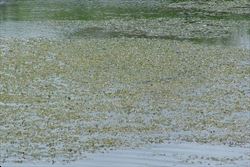
large infestation (Photo: Sheldon Navie)
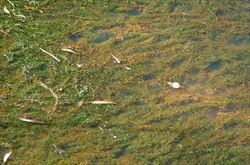
dense infestation (Photo: Sheldon Navie)
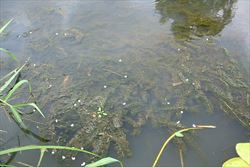
habit (Photo: Sheldon Navie)
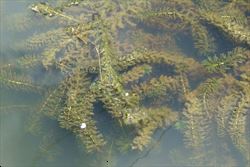
habit (Photo: Sheldon Navie)
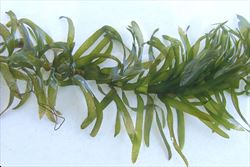
leaves (Photo: Sheldon Navie)
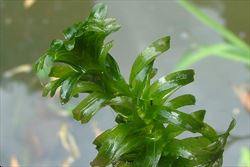
close-up of leaves (Photo: Sheldon Navie)

leaves and flowers (Photo: Sheldon Navie)
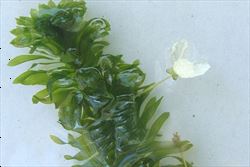
leaves and flowers (Photo: Sheldon Navie)
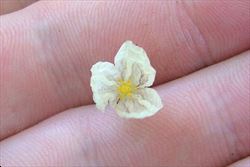
close-up of flower (Photo: Sheldon Navie)
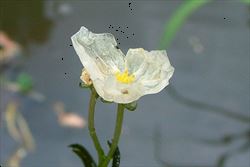
close-up of flower (Photo: Sheldon Navie)
Scientific Name
Egeria densa Planch.
Synonyms
Anacharis densa (Planch.) Vict.Elodea densa (Planch.) Casp.
Family
Hydrocharitaceae
Common Names
anacharis, Argentine acharis, Argentinian waterweed, Brazilian elodea, Brazilian waterweed, common waterweed, dense water weed, dense waterweed, ditch moss, egeria, giant elodea, leafy elodea, water thyme, waterweed
Origin
This species is native to eastern South America (i.e. Argentina, south-eastern Brazil and Uruguay).
Cultivation
This species has been widely cultivated as an ornamental in the aquarium trade, as well as in garden ponds and water features.
Naturalised Distribution
Dense waterweed (Egeria densa) has become widely naturalised in Australia, particularly in water bodies nearer to major cities and other populated areas in the south-eastern and eastern parts of the country. It is most common in south-eastern Queensland in coastal New South Wales and in southern Victoria (i.e. near Melbourne). It is also present in south-western Western Australia (i.e. near Perth), in some inland parts of southern New South Wales, and in Tasmania. In addition, it was naturalised in south-eastern South Australia and is possibly naturalised in the Northern Territory.
Habitat
This species grows in a wide range of climates (i.e. from temperate to tropical environments). It is an aquatic weed that infests slow-moving waterways, ponds, lakes, dams and water features.
Habit
An underwater (i.e. submerged), long-lived (i.e. perennial), freshwater plant that is usually rooted to the substrate, but is occasionally found as a free-floating mat near the water surface.
Distinguishing Features
- a very leafy aquatic plant that grows almost entirely underwater.
- its stems (up to 5 m long) are usually anchored to the substrate, but can sometimes be free-floating at the water surface.
- its partially see-through and strap-like leaves densely clustered along stems in groups of 3-7.
- its white flowers are borne just above the water surface and have three broad petals (9-12 mm long).
- it only reproduces vegetatively in Australia, via stem fragments.
Stems and Leaves
The stems are much-branched, slender (2-3 mm thick), and green to brownish in colour. They often develop roots (i.e. adventitious roots) near the base of the plant and can reach up to 3-5 m long. The stem joints (i.e. nodes) are very close together, particularly on the upper parts of the stems (i.e. sometimes less than 2 mm apart). Hence, the leaves are wider apart near the base of the stems but densely crowded towards their tips.
The leaves are usually borne in groups (i.e. whorls) at each stem joint (i.e. node), varying from 3-7 in each group (usually four or five). However, towards the base of the stems the leaves are usually oppositely arranged and smaller. All leaves are stalkless (i.e. sessile) and partially see-through (i.e. translucent) with minute teeth along their margins. The leaves (10-40 mm long and 2-5 mm wide) are also elongated (i.e. strap-like) and taper to a point at the tip (i.e. acite apex).
Flowers and Fruit
Male and female flowers are borne on separate plants (i.e. they are unisexual) and only male plants and male flowers are found in Australia. The male flowers have three white petals (9-12 mm long and 6-9 mm wide), three smaller sepals (3-4 mm long), and nine yellow stamens. These flowers are borne on or just above the water surface on a 'stalk' (i.e. hypanthium) 2.5-7.5 cm long. The 'stalks' (i.e. hypanthia) are usually initiated from the upper leaf forks (i.e. axils). Flowering occurs from spring through to autumn, but is most abundant during late spring and summer.
As female plants are not present in Australia, fruit and seeds are not produced here.
Reproduction and Dispersal
All reproduction is vegetative (i.e. asexual), via stem fragments, in Australia. New plants can be produced from stem fragments that are only two joints (i.e. nodes) in length.
Stem fragments are spread along waterways by water movement and boats, and are usually introduced into new water bodies in dumped aquarium waste or by contaminated vehicles.
Environmental Impact
Dense waterweed (Egeria densa) is regarded as an environmental weed in Queensland, New South Wales, Victoria, South Australia, Western Australia and Tasmania. It is also seen as a potential environmental weed in the Northern Territory. It produces dense underwater mats that block light penetration and compete with, and often almost completely displace, native plants. It also depletes oxygen levels and otherwise changes the character of invaded waterways and waterbodies. This can also adversely affect the available habitat for fish and waterfowl.
In south-eastern Queensland, where this species is very common in waterways, it is ranked among the top 50 most invasive plant species. It is also widespread in New South Wales, and has become the dominant water plant along about 150 kilometres of the Hawkesbury-Nepean River system. It is also listed as an invasive garden plant in the Greater Adelaide Region, is an aquatic wetland weed in southern Western Australia, and is regarded as a serious threat to one or more vegetation formations in Victoria.
Dense waterweed (Egeria densa) is highly invasive in the USA, where it forms dense monospecific surface mats that restrict water movement, trap sediment, and cause fluctuations in water quality. In New Zealand, it has also been observed to rapidly re-colonise de-vegetated waterways following floods.
Other Impacts
The extremely dense submerged masses of dense waterweed (Egeria densa) can seriously retard water flow, interfere with pumping and irrigation equipment, impede hydroelectric operations, and adversely affect potable water supplies. Other recreational activities like fishing, boating and swimming may also be impeded.
Legislation
This species is declared under legislation in the following states and territories:
- Northern Territory: C - not to be introduced into the Territory.
- South Australia: 1@ - this species is declared a Class 1a and is a prohibited aquatic weed. Its presence must be notified and the plant must be destroyed (throughout the entire state). For information on proclaimed plants in South Australia contact your local Animal and Plant Control Board.
- Tasmania: D - the importation or sale of this species is prohibited and measures to reduce its population in an area, eradicate it from an area, or restrict it to a particular area may be required.
- Western Australia: P1 - trade, sale or movement into the state prevented, and P2 - to be eradicated (throughout the entire state).
Management
For information on the management of this species see the following resources:
- the Biosecurity Queensland Fact Sheet on this species, which is available online at http://www.dpi.qld.gov.au.
- the Northern Territory Department of Natural Resources, Environment and The Arts Agnote on this species, which is available online at http://www.nt.gov.au/weeds.
- the Western Australian Department of Agriculture and Food information page on this species, which is available online at http://www.agric.wa.gov.au.
- the New South Wales Department of Primary Industries Weed Alert on this species, which is available online at http://www.dpi.nsw.gov.au.
Similar Species
Dense waterweed (Egeria densa) can be confused with other submerged water plants such as elodea (Elodea canadensis), hydrilla (Hydrilla verticillata), lagarosiphon (Lagarosiphon major), hornwort (Ceratophyllum demersum), cabomba (Cabomba caroliniana) and parrot's feather (Myriophyllum aquaticum). Hydrilla (Hydrilla verticillata) and hornwort (Ceratophyllum demersum) are native to large parts of Australia. These species can be differentiated by the following differences:
- dense waterweed (Egeria densa ) has elongated (i.e. strap-like) leaves with very finely toothed (i.e. serrulate) margins. These leaves are densely crowded along the stems, stalkless (i.e. sessile), and usually arranged in groups (i.e. whorls) of four or five. Its flowers are relatively large with three broad white petals (9-12 mm long) and are borne on the water surface on relatively short 'stalks' (2.5-7.5 cm long).
- elodea (Elodea canadensis) has oblong or elongated (i.e. strap-like) leaves with very finely toothed (i.e. serrulate) margins. These leaves are less crowded, stalkless (i.e. sessile), and usually arranged in groups (i.e. whorls) of three. Its white flowers are relatively small with three slender petals (up to 5 mm long) and are borne on the water surface on long 'stalks' (up to 30 cm long).
- hydrilla (Hydrilla verticillata) has elongated (i.e. strap-like) leaves with very finely toothed (i.e. serrulate) margins. These leaves are less crowded, stalkless (i.e. sessile), and usually arranged in groups (i.e. whorls) of four to six. Its inconspicuous greenish flowers are very small (only 3 mm across) with six tiny 'petals' (i.e. perianth segments) and are borne on the water surface on long stalks.
- lagarosiphon (Lagarosiphon major ) has elongated (i.e. strap-like) leaves that are bent backwards (i.e. strongly recurved) and have very finely toothed (i.e. serrulate) margins. These leaves are somewhat crowded along the stems, stalkless (i.e. sessile), and alternately arranged in a distinctive spiralling pattern. Its inconspicuous pink or purplish flowers are very small (only 3 mm across) with six tiny 'petals' (i.e. perianth segments) and are borne on the water surface on long stalks.
- hornwort (Ceratophyllum demersum) has finely-divided leaves that are arranged in groups (i.e. whorls) of seven to twelve and are stalkless (i.e. sessile). Its inconspicuous greenish flowers are very small and enclosed in several see-through (i.e. transparent) bracts. These flowers are stalkless (i.e. sessile) and borne below the water surface in the leaf forks (i.e. axils).
- cabomba (Cabomba caroliniana) has finely-divided, fan-shaped leaves that are usually paired (i.e. oppositely arranged) and borne on stalks (i.e. petioles) up to 30 mm long. Its white flowers are relatively large with six broad 'petals' (i.e. perianth segments) 4-10 mm long and are borne just above the water surface on short stalks (1-4 cm long).
- parrot's feather (Myriophyllum aquaticum) has finely-divided leaves that narrow towards their tips and are arranged in groups (i.e. whorls) of four to six along the stems. The leaves and stems usually emerge some distance (i.e. up to 10 cm or more) above the water surface. Its inconspicuous greenish or yellowish coloured flowers are very small with four 'petals' (actually sepals) and are borne on short stalks in the leaf forks (i.e. axils).

